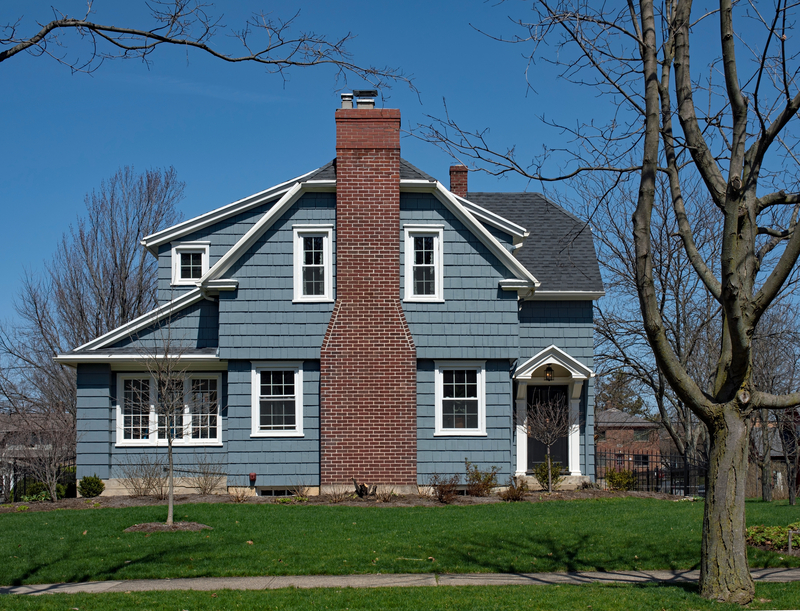Architectural siding plays a pivotal role in shaping the aesthetic and personality of buildings, often becoming a defining feature of specific regions. This is particularly evident in areas like Wyndmoor, which boasts a rich architectural history and a unique identity. Our focus in this detailed exploration will be the distinctive architectural siding characteristics that make Wyndmoor’s buildings stand out. We will delve into various aspects of these features, including their historical evolution, the materials used, key design elements, and the cultural and environmental influences that have molded them. By examining these factors, we aim to provide a comprehensive understanding of Wyndmoor’s architectural identity and the significance of its siding in the broader context of architectural design and heritage.

Historical Context
The architectural evolution of Wyndmoor is deeply rooted in its historical and cultural backdrop. With a history that stretches back to the times of early settlements, Wyndmoor has witnessed a harmonious amalgamation of diverse architectural styles. This eclectic mix is prominently reflected in the siding characteristics of its buildings. In these structures, one can observe a unique fusion of design elements drawn from various periods and architectural styles. This blend results in a distinct and visually captivating aesthetic that embodies the rich and varied heritage of Wyndmoor, setting it apart as a region with a unique architectural identity.
Material Innovation
One of the standout features of Wyndmoor’s architectural siding is its embrace of innovative materials, which has significantly enhanced both aesthetics and functionality. While traditional materials such as wood and brick remain staples, Wyndmoor has been at the forefront of incorporating synthetic materials and advanced composites into its building designs. This progressive approach not only imparted a modern flair to the buildings but also markedly improved their durability and ease of maintenance. A prime example of this innovation is the widespread use of fiber cement siding in Wyndmoor’s constructions. This material skillfully imitates the look of natural wood while offering superior resistance to environmental factors, making it an increasingly popular choice among builders and architects in the area. The adoption of such materials reflects Wyndmoor’s commitment to blending tradition with modernity, creating a distinctive and enduring architectural style.
Design Elements
The design elements of Wyndmoor’s siding are particularly distinctive. Features include:
- Elaborate Trim Work: Many buildings in Wyndmoor feature intricate trim work around windows and doors, as well as along rooflines. This often includes detailed moldings and carvings, adding a layer of elegance and complexity to the building’s exterior.
- Varied Textures: Mixing different siding textures is a common theme. Smooth, flat panels may be juxtaposed with rough, staggered shingles to create visual interest and depth.
- Colorful Palettes: Unlike regions that adhere to more muted or traditional color schemes, Wyndmoor buildings often boast vibrant and varied color palettes. This not only highlights individual architectural details but also contributes to the overall charm and character of the streetscape.
Environmental Adaptation
Wyndmoor’s architectural siding extends beyond mere visual appeal, embodying a deep connection with the local environment and its challenges. This relationship is evident in the strategic use of weather-resistant materials, which ensure the longevity and integrity of buildings against the elements. Moreover, the architectural designs prevalent in Wyndmoor are thoughtfully crafted to counteract environmental stressors such as wind, rain, and prolonged sun exposure. Such practical considerations are a crucial aspect of Wyndmoor’s architectural ethos, reflecting a harmonious blend of form and function. These design choices not only enhance the durability and sustainability of the structures but also demonstrate a keen awareness and adaptation to the area’s specific climatic conditions. In doing so, Wyndmoor’s architectural identity is shaped as much by its aesthetic values as by its pragmatic response to the natural environment.
Cultural and Artistic Influences
Ultimately, the unique artistic and cultural landscape of Wyndmoor has significantly influenced its architectural siding, leaving a lasting imprint on the area’s buildings. The siding designs in Wyndmoor are a testament to a wide array of influences, encompassing local artisanal practices as well as broader artistic trends and movements. This blend of artistic expression and architectural design not only elevates the visual charm of the buildings but also weaves a narrative of the region’s rich cultural tapestry. These design elements serve as a visual chronicle, telling stories of the area’s history, its people’s skills, and their aesthetic sensibilities. The fusion of art and architecture in Wyndmoor’s siding is more than just an enhancement of beauty; it is a celebration of the area’s vibrant cultural heritage and its ongoing artistic evolution.
Wyndmoor’s architectural siding features are a vivid tapestry of history, innovation, and artistry. From the use of pioneering materials to the incorporation of diverse design elements, these features not only enhance the aesthetic appeal of buildings but also reflect the area’s unique cultural and historical narrative. As we appreciate these architectural details, we gain insights into the broader story of Wyndmoor’s identity and evolution.

